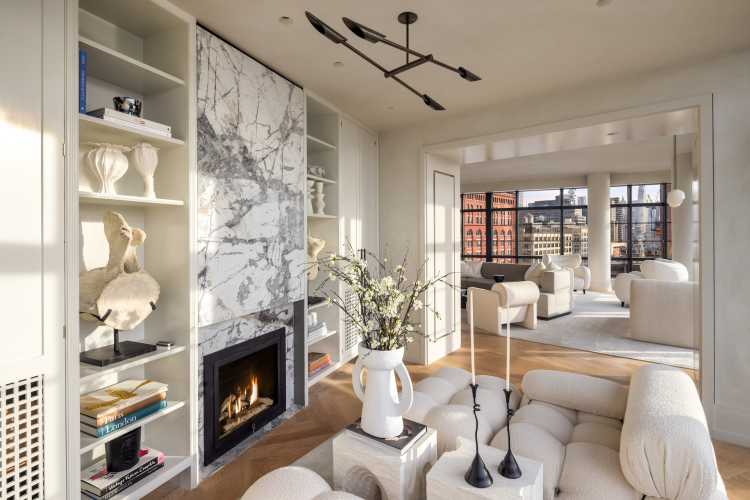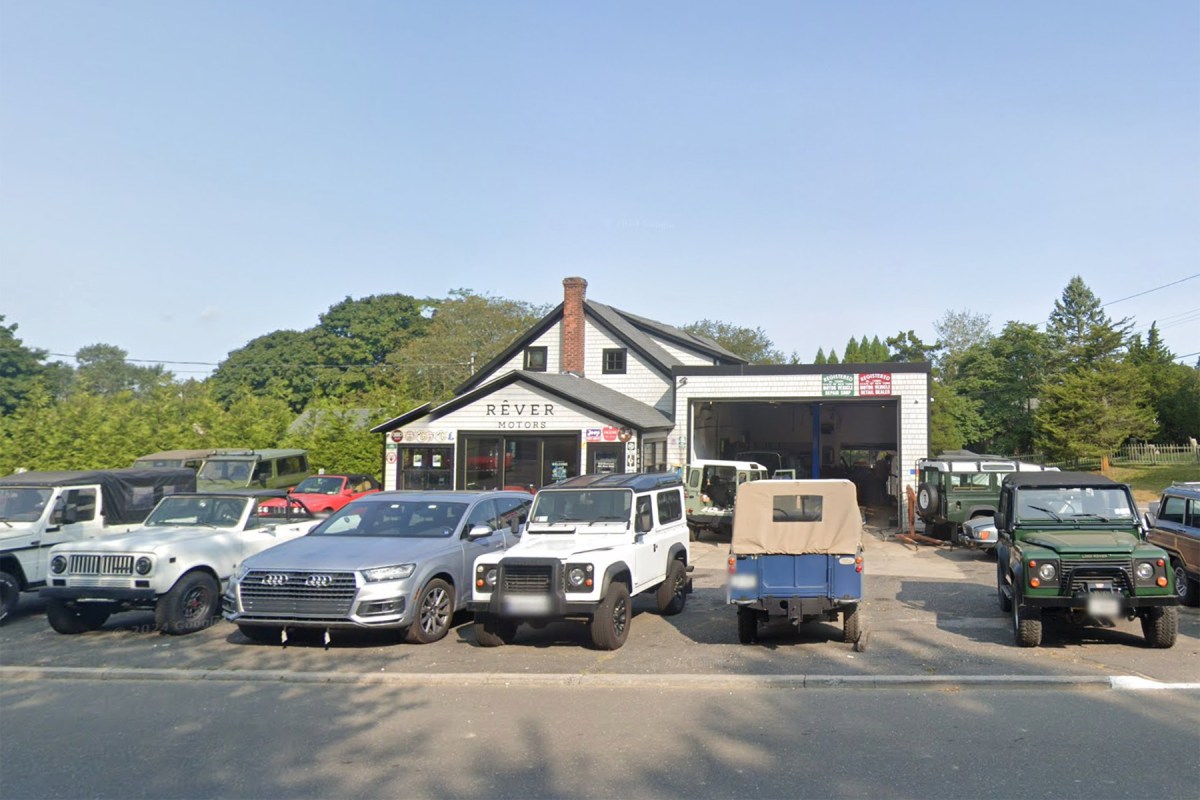You’ve most certainly heard of the tiny living movement, but “van life” may sound less familiar, especially here on the East Coast. It’s a subculture for those who like the nomadic, minimalistic lifestyle, turn the inside of a van into a home on four wheels and travel wherever their heart desires.
That may not exactly evoke thoughts of the Hamptons, where the McMansion was born and luxury estates have wine cellars and movie theaters in which these vans could do donuts. But like everything else that starts on a small scale, van life can indeed be luxurious, too.
Step inside the latest creation by Michael Soares, whose East End-based van conversion company, Outerly, is booked out for six months by residents dropping an average $45,000 to $50,000 to transform their Mercedes Sprinter vans into lavish, albeit tiny, homes.
The sliding door opens to reveal a van modified beyond recognition, looking more like a modern apartment. Custom-made Shaker-style cabinets and other touches create a mini-kitchen, living room and bedroom, all in one. There is a wardrobe closet, wrap-around bed, lots of storage and even a SimpliSafe Security system. A Dometic cooler fridge is hidden in a slide-out drawer under the sink (it is removable for use as a portable cooler, too).
“Right now, everybody’s doing van life,” he says in his Flanders shop, where demand has quickly outpaced supply since the Northport native started his business just this year after deciding to rent out a van he custom built for himself (it goes for $400 a night on Outdoorsy, a peer-to-peer marketplace).
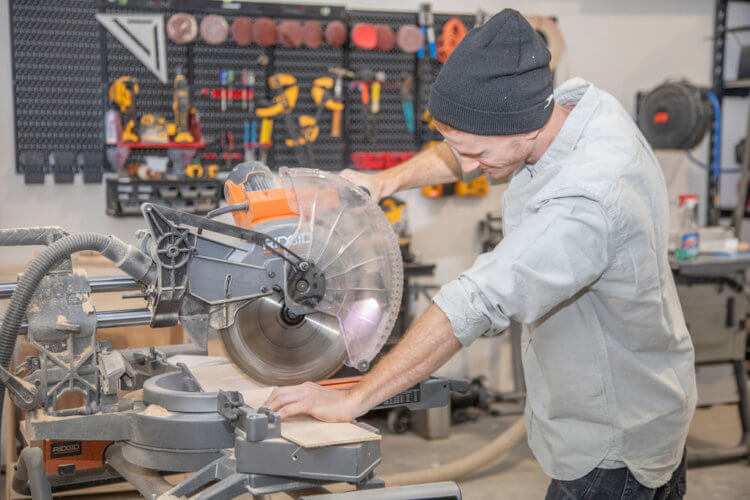
The process takes typically about two to two and a half months, but the COVID-19 pandemic has backed up shipping and product availability in this niche industry just like so many others, so wait times are trending more toward three months at this point.
“Literally all the products for these things are on back order. For instance, all the windows for these vans are impossible to find,” pointing to newly installed T-vent windows by CR Laurence. The T-vent windows open out, allowing fresh air in, but never the rain. It’s little touches like this that matter.
Soares is part carpenter, part electrician, part mechanic, part plumber and part designer. You could call him a conversion specialist. He works one-on-one with clients to customize each space to fit storage, sleeping, cooking and hygiene needs. It all starts with finding the perfect van—they range in size from 19 to 24 feet long with wheel bases of 144 inches to 170 inches, and sticker prices that start at $45,000 to $50,000, or $60,000 to $70,000 for the 4-by-4s. Soares designs the layout, orders the parts, and converts every inch before handing over the keys.
Figuring out a way to craft what a client needs and fit it into the approximately 62- to 90-square-foot spaces is like working a puzzle. In this particular van, the induction stovetop pulled out from the butcher block countertop (these are popular, Soares says, but his next client requested resin river countertops with live-edge). The client requested a hideaway shower, so a hinged countertop lifts up revealing the shower and tiled stall, and the shower curtain drops down from the ceiling.
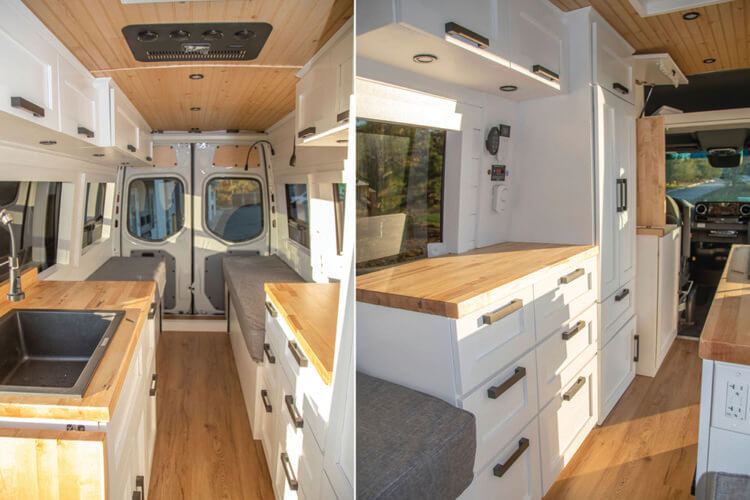
It is not only the craftsmanship and use of space that make it luxurious, but the necessities a small space provides that can’t necessarily be seen. For example, the half-inch-thick shiplap on the walls have three layers of insulation behind it, so it can be lived in in it year-round. Between the metal roof and the insulation are furring strips, which create a place to screw in the finished wall and wood ceiling. Usually, the ceiling is dropped a little bit to make it completely flush and to allow room for hiding wires and such, but in this particular van, since the client is 6 foot 3, interior height is at a premium. Still, there is room for recessed lighting.
Soares has a background in renovating bathrooms and kitchens and working as a carpenter, but he taught himself how to convert vans, starting out by creating one for himself. He began by watching videos— “and this was before living in a van was cool”—and found it easy to do. “I love working with wood,” he says. “But there’s a lot more to these vans than carpentry.
“This van was actually pretty tricky,” he continues, as the shower and sink are located on opposite sides of the vehicle. “I had to run plumbing underneath the flooring there.”
This particular vechicle has a 25-gallon water tank and a 4-gallon electric water heater, and the rig is outfitted so a hose can be attached to fill up the tank to make water available on the go.
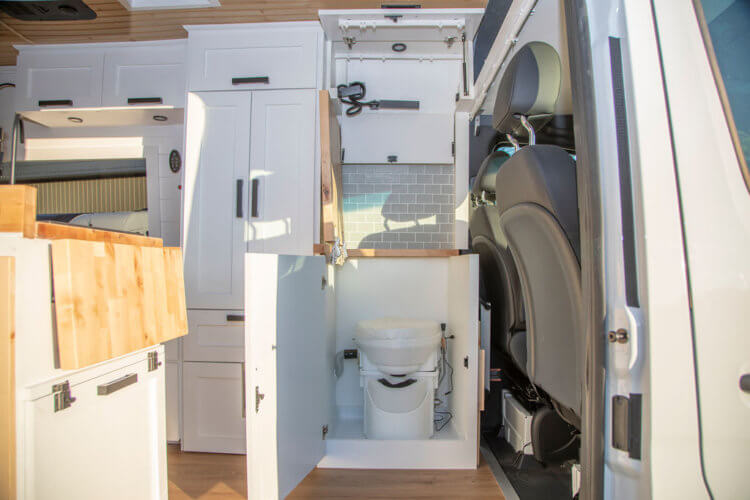
We know, we know. You want to know where the toilet is. Don’t worry, there is one. This client picked out a specific model for Soares to use—a portable composting toilet by Nature’s Head, which claims to be odorless thanks to a built-in fan. This may sound provincial, but it’s pricy at nearly $1,000. The toilet hides in the shower stall, under the fold-down countertop.
Power comes from a 3,000-watt inverter that turns on with a flip of a switch. Espar heaters, a little motor installed underneath the driver and passenger seats, supply heat and run off the diesel fuel, even when the van is turned off.
For cooling, Soares has been installing Nomadic Cooling’s 12-volt air conditioning unit “that is actually revolutionizing the whole van life situation, because with ACs in vans you really can’t run them unless you’re plugged into shore power, because they drain your batteries very quickly. The 12-volt units actually run off your solar system and your batteries for five and a half hours without draining them out,” he says.
The price tag? About $3,600, versus $1,000 for a normal 110-volt AC unit. “But it’s worth it,” he says. “You can just go out boondocking and not have to have any source of power but solar.”
In most of Outerly’s builds, he installs a minimum of 350-watts of solar on the roof. “That will power this entire van throughout the day without even touching the batteries, and then will charge the batteries very quickly to use at night.”
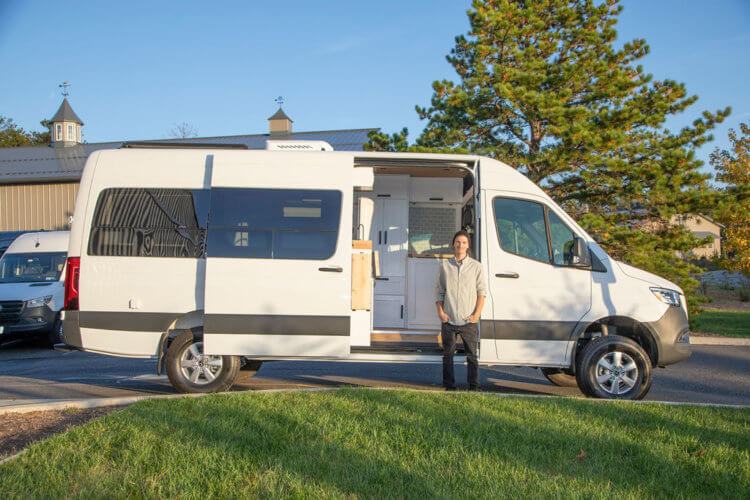
So why not a typical recreational vehicle, like a travel trailer or fifth-wheel? Soares says there is a big difference. Sprinters are Class B vehicles that are easier to drive than bigger, more cumbersome RVs. They are also easier to park. “For people who are older that love camping, it’s hard for them to get a rig that’s 30 feet long and be okay with driving that fulltime. The Sprinters, they actually drive like a normal car—you do have to take a wider of a turn, but besides that, it’s a dream to drive.”
While there is a movement of people downsizing to live the simple van life, these are obviously for clients with bigger wallets. For his expertise and knowledge, his base fee starts at $25,000. Depending on the amenities, parts for the conversion can cost anywhere between $20,000 and $50,000.
Timing to start the business could not have been better. In March, just as the pandemic hit, the van and his services became more in demand. He has found his customers are looking for alternatives during a time when travel is restricted. “They want to be able to travel to see family and friends without having to get on the plane,” Soares says.
“But then there’s the other customers, who literally live and die this stuff,” he adds, pointing to a van that is on deck for work in his shop.
“They actually were living in this van with nothing in it, with just a mattress, because they love the outdoors so much—they didn’t need to, they just wanted to. They started outfitting the exterior of the van while they were waiting for my time slot to be ready, and then they brought it to me, and they’re super stoked on it.”
This article appeared in the November 2020 issue of Behind The Hedges. Follow Behind The Hedges on Twitter, Instagram and Facebook.


